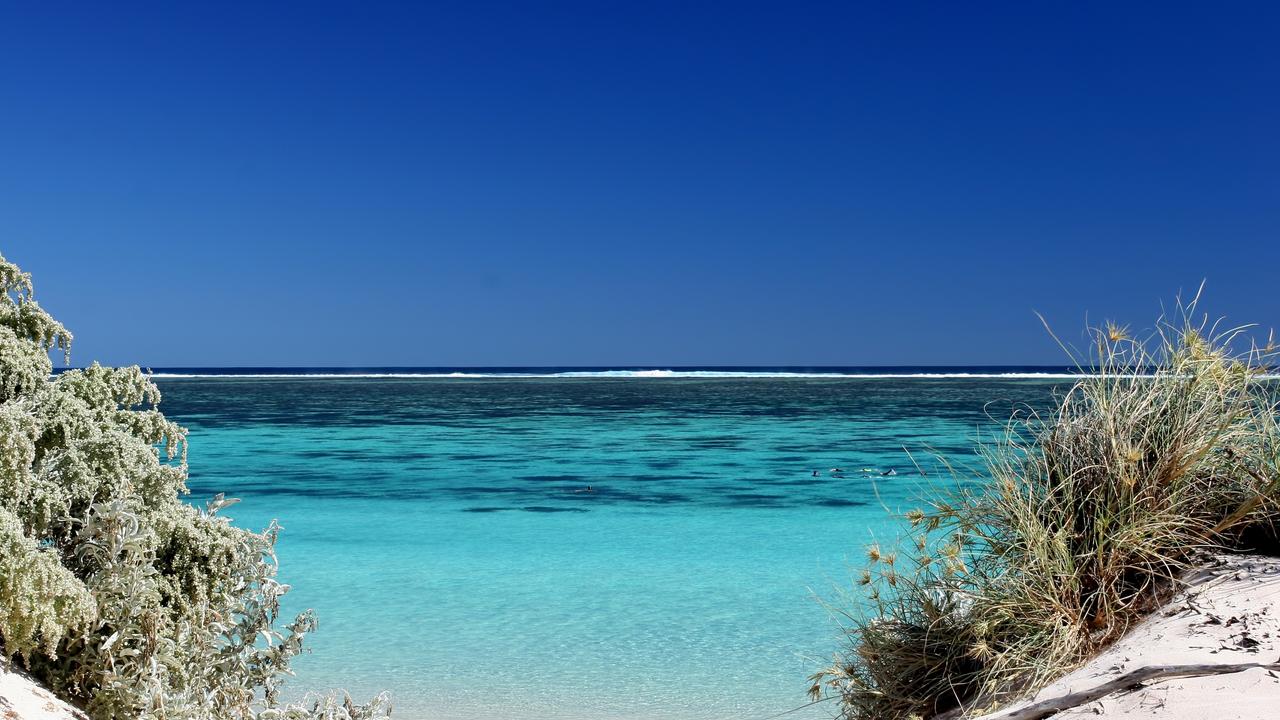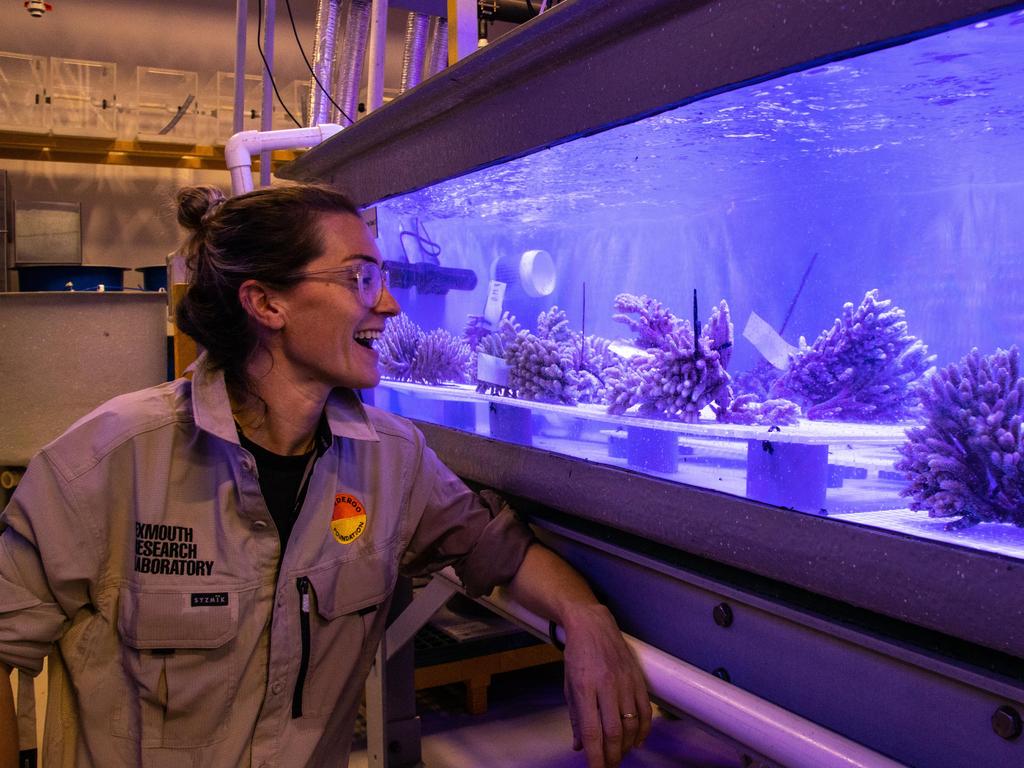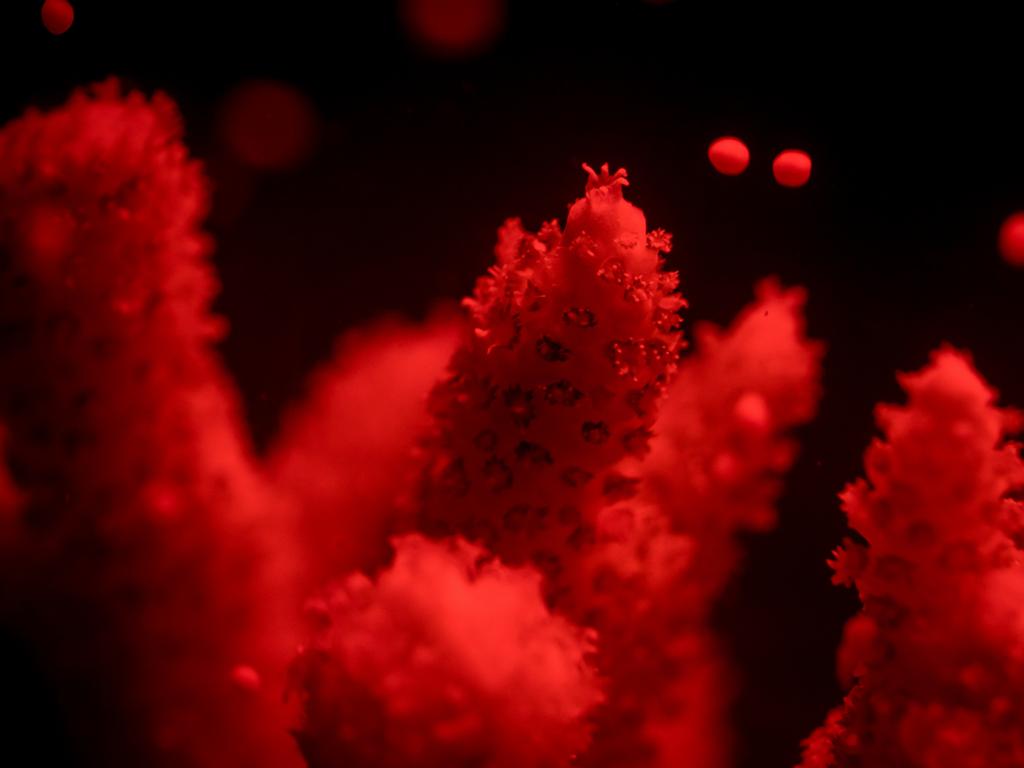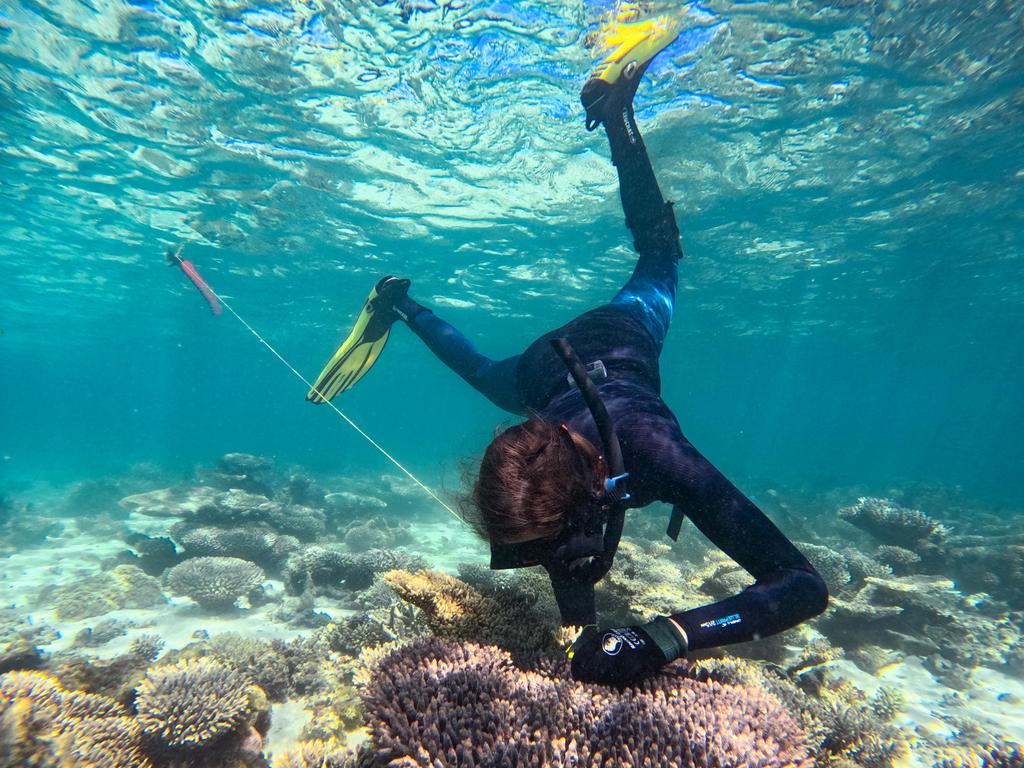Minderoo scientists breeding heat-resistant corals on Ningaloo Reef
Call it the survival of the very fittest. Scientists have made a discovery in the lab that could boost survival of the world’s reefs as oceans warm up. See how.

Scientists have bred heat-resistant Ningaloo corals in the lab for the first time – a potentially game-changing technology as reefs worldwide struggle for survival in warming oceans.
Lead researcher at Twiggy and Nicola Forrest’s Minderoo Foundation labs in Exmouth, Dr Kate Quigley, said the team had sought the “elite athletes” of the Ningaloo coral world to breed a new generation of reefs that will be more resistant to marine heatwaves and bleaching.
While the Great Barrier Reef has been hit with four mass-bleaching events since 2016, with whitened corals evident on 91 per cent of reefs surveyed during the 2021/22 summer, Ningaloo has escaped significant bleaching since 2011.
Dr Quigley said this was largely due to the cooler currents around the Western Australia coast, but the Indian Ocean was getting warmer.

“On average, temperatures are ticking up and some locations are increasing faster than would be expected,” she said.
“There’s a lot of research trying to understand what are the warming rates, and what are the pockets of warming that are going to essentially go over the thresholds corals and other important ecosystems can withstand.”
Coral spawning is one of the natural world’s weirdest wonders, with reefs releasing billions of egg and sperm bundles almost simultaneously.
“They’re synched up, almost to the minute,” Dr Quigley said.
On Ningaloo, the corals spawn generally four or five nights after the March full moon, with most of the action happening over one night, although different coral species release at different times.

“It’s like multiple parties, and then one big party,” Dr Quigley said.
Replicating this sort of event in the lab requires perfect conditions, with the scientists even working in red light as normal lighting puts stress on the polyps.
“We try to make it like the Hilton Hotel; as calm and peaceful as we can,” Dr Quigley said.
While selective breeding was showing promise, a “technology fix” was no match for doing something about the root cause of ocean warming, Dr Quigley said.

“We need strong regulation around emissions and getting climate change under control as soon as possible, because whilst corals are incredible species that do have some capacity for heat tolerance, at some point in time they will run out of this tolerance,” she said.
Despite the successful breeding program at Exmouth, any attempt to use Ningaloo corals to help bolster the Great Barrier Reef would require careful consideration, Dr Quigley said.
“Corals do best where they come from,” she said. “The possibility that a west coast coral could do well in the east coast is high, but we would have to go through a whole series of risk assessments to decide if that was a safe conservation action.”
The Great Barrier Reef Marine Park Authority is expected to release its summer 2022/23 report on the health of the reef next month, but its latest weekly update noted there was “minor coral disease and damage” across all regions.




